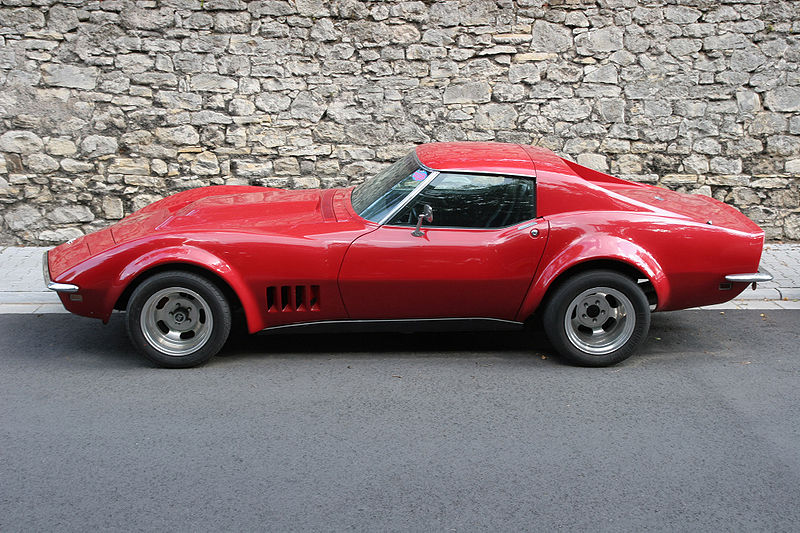Generation Three (C3)

The C3 ran from 1968 to 1982. It was patterned after Chevrolet's
"Mako Shark II". This generation had an unorthodox and unintended introduction to the public. 1968
marked the introduction of Mattel's Hot Wheels line of 1/64-scale die cast toy cars.GM tried to keep
the appearance of the upcoming car secret, but the release of Hot Wheels line several weeks before the
Corvette's unveiling had a certain version of particular interest to Corvette fans: the custom Corvette,
a GM-authorized model of the 1968 Corvette.
The 1968 Corvette was not an actual "Stingray", but it is almost
identical to the 1969 "Stingray". The 350 cu in (5.7 L) engine became available in the 1969 Corvette.
In 1970 the 427 big block was enlarged to 454 cu in (7.4 L). Power peaked in the 1970-71 models with
the 1970 LT-1 small block putting out 370 hp, and the 1971 454 big block with 425 hp. 1972 had lower
values, expressed in HP, because of their move from standard SAE Gross to SAE Net measurement for power.
The move to unleaded fuel, emission controls, and catalytic converters continued to make power decline
and bottom out in 1975. The base ZQ3 engine put out 165 hp, and the optional L82 engine put out 205 hp.
The style of the C3 generation changed little. In 1972, minor trim
changed occurred. The front chrome bumper was dropped in 1973 for a urethane-compound bumper. The rear
bumper fallowed in 1974. 1975 was the last year of the convertible, until 1986. The 25th "Silver
Anniversary" edition, the first Corvette Indy Pace Car, came out in 1978, along with the "fast back"
rear window, and the highest production number until the C5. In 1980, a significant reduction in drag
was achieved with an integrated aerodynamic redesign. An opening rear hatch was offered in 1982, but
only on the Collectors Edition model. A new engine with cross fire injection was also introduced
that year as the L83, and was the only engine available in 1982 and not offered with a manual transmission.

